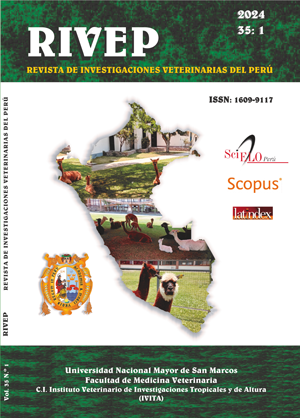Identification of microplastics in faeces of sea lions (Otaria flavescens), in La Poza port, Biobío Region, Chile
DOI:
https://doi.org/10.15381/rivep.v35i1.25593Keywords:
Pollution, Otariids, marine mammals, microparticlesAbstract
Microplastics are generated by the fragmentation of plastic that enters the oceans and is accidentally consumed by various species in the trophic chain. Otariids are considered bioindicators of the presence of microparticles in the environment; however, the level of impact in the coastal area of the Bio-bío region, Chile, is unknown. The aim of this work was to evaluate the presence of this polymer in faeces of sea lions (Otaria flavescenses), in the 'La Poza' sector, commune of Talcahuano, Bio-bío region. Stool samples were collected, freeze-dried, digested and subsequently filtered to identify microplastics. Microfibres of various colours were found, with a predominance of black. It is concluded that sea lions were indicators of the circulation of microplastics in their food chain in the sampling area.
Downloads
Downloads
Published
Issue
Section
License
Copyright (c) 2024 Carla Amanda Pérez Gómez, Mariett Torres, Karla Pozo, Diana Echeverry Berrío

This work is licensed under a Creative Commons Attribution 4.0 International License.
AUTHORS RETAIN THEIR RIGHTS:
a. Authors retain their trade mark rights and patent, and also on any process or procedure described in the article.
b. Authors retain their right to share, copy, distribute, perform and publicly communicate their article (eg, to place their article in an institutional repository or publish it in a book), with an acknowledgment of its initial publication in the Revista de Investigaciones Veterinarias del Perú (RIVEP).
c. Authors retain theirs right to make a subsequent publication of their work, to use the article or any part thereof (eg a compilation of his papers, lecture notes, thesis, or a book), always indicating the source of publication (the originator of the work, journal, volume, number and date).










